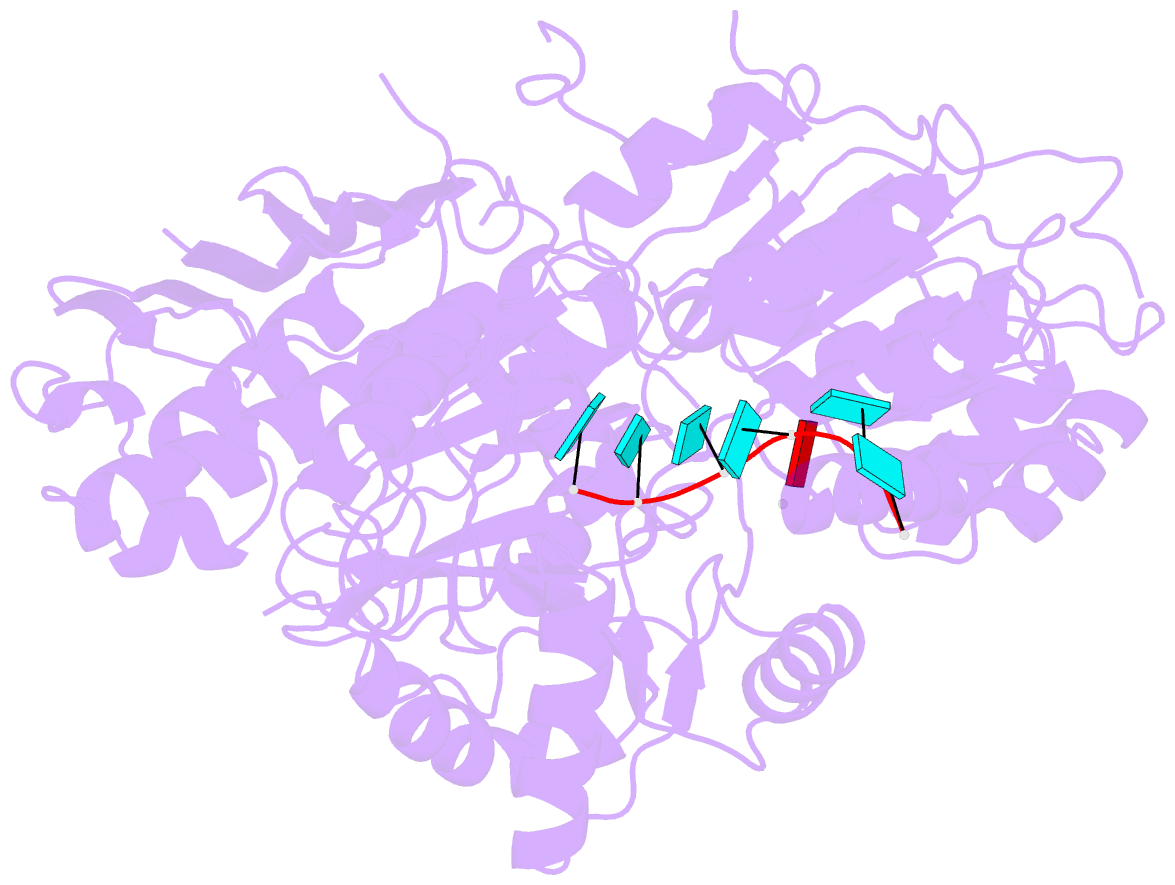Summary information and primary citation
- PDB-id
-
2j0s;
SNAP-derived features in text and
JSON formats
- Class
- hydrolase
- Method
- X-ray (2.21 Å)
- Summary
- The crystal structure of the exon junction complex at
2.2 Å resolution
- Reference
-
Bono F, Ebert J, Lorentzen E, Conti E (2006): "The
Crystal Structure of the Exon Junction Complex Reveals
How It Mantains a Stable Grip on Mrna."
Cell(Cambridge,Mass.), 126,
713. doi: 10.1016/J.CELL.2006.08.006.
- Abstract
- The exon junction complex (EJC) plays a major role in
posttranscriptional regulation of mRNA in metazoa. The EJC
is deposited onto mRNA during splicing and is transported
to the cytoplasm where it influences translation,
surveillance, and localization of the spliced mRNA. The
complex is formed by the association of four proteins
(eIF4AIII, Barentsz [Btz], Mago, and Y14), mRNA, and ATP.
The 2.2 A resolution structure of the EJC reveals how it
stably locks onto mRNA. The DEAD-box protein eIF4AIII
encloses an ATP molecule and provides the binding sites for
six ribonucleotides. Btz wraps around eIF4AIII and stacks
against the 5' nucleotide. An intertwined network of
interactions anchors Mago-Y14 and Btz at the interface
between the two domains of eIF4AIII, effectively
stabilizing the ATP bound state. Comparison with the
structure of the eIF4AIII-Btz subcomplex that we have also
determined reveals that large conformational changes are
required upon EJC assembly and disassembly.





